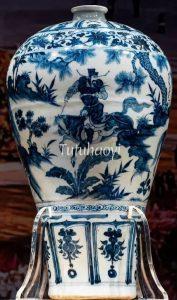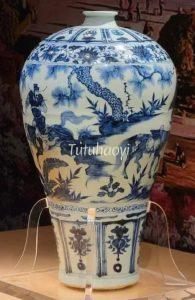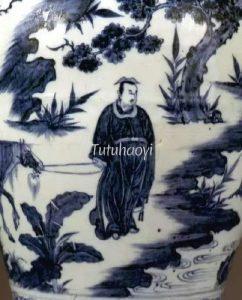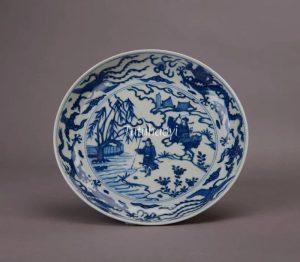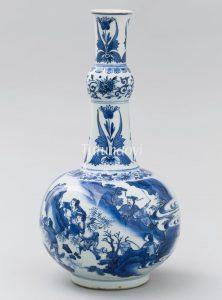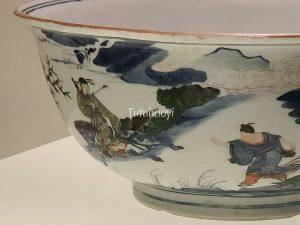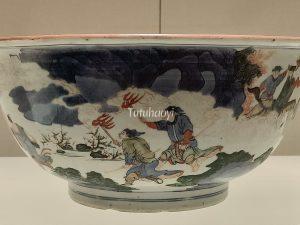Xiao He Pursuing Han Xin by Moonlight
萧何月下追韩信
© Tutuhaoyi.com owns the copyright of the description content for the images attached. Quoting all or part of the description content on this page is permitted ONLY IF ‘Tutuhaoyi.com’ is clearly acknowledged anywhere your quote is produced unless stated otherwise. (本页描述内容版权归Tutuhaoyi.com所有,转发或引用需注明 “Tutuhaoyi.com”, 侵权必究, 已注开源信息的条目除外。)
The story comes from the Records of the Grand Historian (Shiji 史记), specifically the biography of the Marquis of Huaiyin. It recounts an episode from 206 BCE, during the power struggle between the Chu and Han kingdoms.
Han Xin 韩信, well-versed in military strategy, joined Liu Bang 刘邦 during this turbulent period. However, he was only appointed to a minor post, and his talent went unrecognised. Disheartened, Han Xin fled under the cover of night.
Xiao He 萧何, Liu Bang’s chief minister, was eager to recruit talented individuals. When he heard of Han Xin’s departure, he pursued him immediately, riding through the night. According to legend, he caught up with Han Xin at the Cold Stream, where the water had suddenly risen, blocking Han Xin’s path. Xiao He seized the moment to persuade him to return.
Back at camp, Xiao He urged Liu Bang to reconsider. He praised Han Xin as a rare military genius and insisted that if Liu Bang wanted to win control of the empire, he must appoint Han Xin to a key position. Liu Bang accepted the advice and, on an auspicious day, held a formal ceremony to appoint Han Xin as Grand General. Han Xin later played a decisive role in Liu Bang’s campaigns and helped establish the Han dynasty.
story scene description by Rachel Ma
Fig 1-3: porcelain vase with underglaze blue decoration, 14th century, courtesy of Nanjing Municipal Museum, Jiangsu Province, China
Fig 4: porcelain dish with underglaze blue decoration, Wanli period (1573–1620), Ming dynasty, courtesy of Nanshan Museum, Shenzhen, China
Fig 5-6: porcelain vase with underglaze blue decoration, Chongzhen period (1628–44), Ming dynasty, courtesy of Dresden State Art Collections, Germany, Inv. no. PO 2096
Fig 7-8: famille verte bowl, Shunzhi period (1644–61), Qing dynasty, courtesy of Liaoning Provincial Museum, China; Photograph by Rachel Ma
